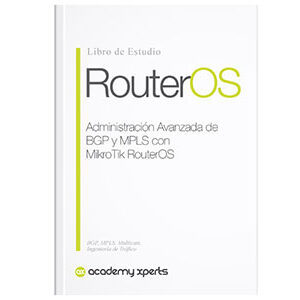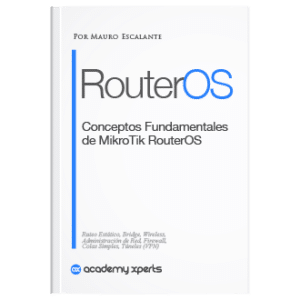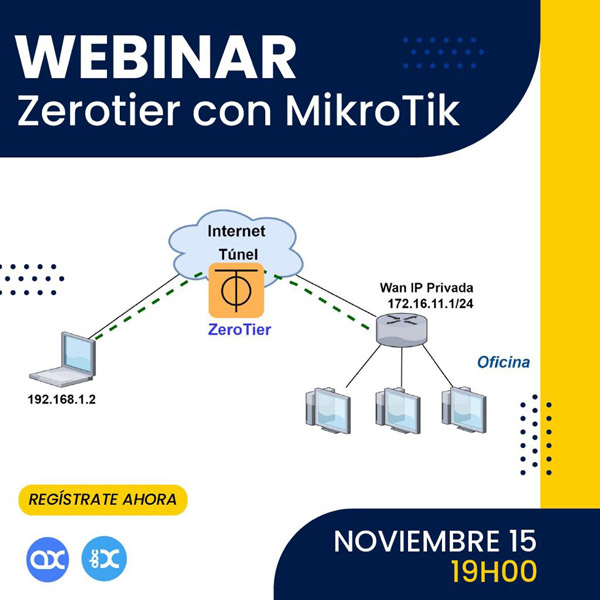In depth with Multicast: Advantages, Disadvantages and Use Cases
- Mauro Escalante
- No comments
- Share this article
The term multicast refers to the delivery of information over a network to multiple destinations simultaneously, using the most efficient strategy to manage copies of data when multiple receivers must receive it.
In other words, instead of sending multiple individual copies of the information to each recipient (as in unicast), multicast sends a single copy of the data to all recipients at the same time.
At the end of the article you will find a small test that will allow you assess the knowledge acquired in this reading
How Multicast works
Multicast functionality is based on a group network model. This means that hosts that wish to receive data join a “multicast group” specific. Each multicast group has its own IP address, which is a special IP address in the range 224.0.0.0 to 239.255.255.255, known as a Class D IP address.
Once a host joins a multicast group, it has permission to receive any data sent to the group's IP address. When a host (or server) wants to send data, it sends the data to the group IP address, rather than sending it to a single IP address.
The routers and switches within the network are aware of these groups and are responsible for replicating the data and sending it to all the hosts that have joined that particular group.
Example
To illustrate this, let's say you have three hosts: A, B, and C. All three join multicast group 1, which has the IP address 224.0.0.1. Now, if you have a server that wants to send data to these three hosts, the server sends the data to 224.0.0.1.
The routers and switches on the network replicate this data and send it to A, B, and C. If a host D joins the group, it will automatically start receiving data sent to that IP address as well.
Multicast protocols
Multicast routing protocols are used to coordinate multicast traffic and ensure that data reaches all members of a group. The most common protocols include:
1. IGMP (Internet Group Management Protocol)
IGMP is a communications protocol used in IP networks to establish multicast group membership on a single network segment (a local network or LAN). It works between the host and the local router, allowing the host to inform the router that it wants to receive data sent to a specific multicast group address.
There are several versions of IGMP.
- La version 1 only allows hosts to join groups.
- La version 2 adds the ability for hosts to leave groups and also introduces a query mechanism for the router to determine which hosts still belong to a multicast group.
- La version 3 adds the ability for hosts to indicate which specific source they would like to receive multicast traffic, known as “source-based multicast.”
2. PIM (Protocol Independent Multicast)
PIM is a routing protocol used to manage how packets are replicated across a network and sent to members of a multicast group.
Unlike other routing protocols, PIM is not used to choose a path through a network, but rather to construct distribution trees that define how packets are replicated and distributed to members of a multicast group.
There are two main types of PIM: PIM-SM (Sparse Mode) and PIM-DM (Dense Mode).
- PIM-SM It is used in networks where multicast groups are dispersed and there are not many receivers.
- PIM-DM It is used in networks where multicast receivers are densely packed.
3. DVMRP (Distance Vector Multicast Routing Protocol)
It is one of the oldest multicast routing protocols. It is based on the RIP (Routing Information Protocol) algorithm, which is a distance vector routing protocol.
DVMRP uses a technique known as traffic flooding, where multicast traffic is sent to all points on the network, and then routers drop traffic from networks that do not have members in the multicast group.
DVMRP constructs what is known as a spanning tree, which is a structure that defines how packets will be distributed across the network. Although DVMRP was one of the first multicast routing protocols and has been very influential, it is not as commonly used today due to the adoption of more modern and efficient protocols such as PIM.
Each of these protocols plays a unique role in facilitating multicast traffic, and will often work together to provide multicast services on a network.
For example, a host can use IGMP to inform a local router that it wants to join a multicast group, and then that router can use PIM to manage the distribution of packets to that host.
Multicast application in local and global networks
Multicast is commonly used in local networks (LANs). This is because most modern switches and routers on a LAN support multicast natively, and network administrators have complete control over the network, making multicast easier to implement and manage.
In a local network, multicast can be used for a variety of applications. These can include video or audio streaming, software distribution, systems updating, and many other applications that require simultaneous delivery of data to multiple hosts.
The use of multicast in a global network like the Internet is more complicated. Although the IP protocol supports multicast, not all routers on the Internet are configured to support it. This means that while you can send data to a group IP address, there is no guarantee that that data will reach all potential group members.
To overcome this limitation, techniques such as “IP Multicast over Unicast”, where multicast data is encapsulated in unicast packets for transport over the Internet. Although this can enable multicast data delivery over the Internet, it does not offer the same bandwidth efficiencies as native multicast.
Multicast and QoS
It is important to mention that multicast traffic can compete with other network traffic for bandwidth and system resources. This can result in quality of service (QoS) issues.
Many networks implement QoS policies to ensure that critical traffic receives priority and that multicast traffic does not overwhelm the network.
These policies may include limitations on the amount of multicast traffic a host or group can generate, prioritizing certain types of traffic over others, or reserving bandwidth for critical applications.
Multicast Security
Security concerns are also a consideration in multicast implementation. Denial of service (DoS) attacks, where an attacker overwhelms a network or host with unnecessary traffic, can be a particular problem.
This is because it is relatively easy for an attacker to generate a large amount of multicast traffic and overwhelm a network.
To mitigate these risks, many networks implement security controls such as access control lists (ACLs) and authentication and encryption techniques for multicast traffic.
ACLs can be used to control which hosts can join a multicast group and what data can be sent to a group address.
Multicast in the Cloud
Cloud-based networks have gained enormous popularity due to their scalability, performance, and efficiency. Many cloud service providers offer some form of support for multicast, although this support may vary depending on the provider and the specific service.
In cloud environments, multicast can be used for a variety of applications, including streaming multimedia, replicating databases, distributing software updates, and performing distributed computing.
The main challenge with cloud multicast is that many cloud providers do not yet offer native support for Internet-level multicast. However, some cloud providers are starting to offer services that allow multicast through tunnels or VPNs.
Future of Multicast
Despite the challenges, the future of multicast looks promising. With the continued evolution of network technology and increasing demands for efficient and scalable network services, we are likely to see greater adoption and innovation in the multicast space.
The adoption of IPv6, the latest version of the Internet Protocol, can further enhance the use of multicast. IPv6 incorporates multicast as an integral part of the protocol, making it easier to use and could drive greater adoption of multicast on the Internet.
Additionally, emerging techniques such as Software Defined Networking (SDN) and Network Function Virtualization (NFV) can provide more flexible and powerful ways to implement and manage multicast.
Benefits of Multicast traffic
- Efficiency in the use of bandwidth: Multicast allows a single data stream to be sent to multiple recipients, reducing the amount of bandwidth required compared to sending multiple Unicast streams.
- Scalability: Multicast is ideal for applications that need to send the same data to a large number of receivers, such as live video and audio streaming.
Multicast traffic challenges
- Complexity: Setting up and managing Multicast transmission can be more complex than Unicast or Broadcast transmission. This is due to the need to manage subscriptions to Multicast groups and the need for routers that support Multicast.
- Congestion control: Unlike Unicast transmission, in which the receiver can control the transmission rate by requesting retransmissions or adjusting the size of the reception window, in Multicast transmission, all receivers obtain data at the same rate. This can cause congestion problems if receivers have different network capabilities.
Summary
Multicast is an efficient network communication strategy that allows data to be delivered to multiple recipients simultaneously.
Although its implementation can be complex and presents challenges such as limited Internet compatibility, QoS control, and security, multicast is an invaluable tool in a large number of applications.
The multicast protocol uses a group system to organize receivers, and relies on a series of protocols, such as IGMP and PIM, to manage and direct multicast traffic.
While its use over the LAN is common, support for multicast over the Internet is still limited, although advances in networking technologies and the adoption of IPv6 are improving this situation.
Whether broadcasting a live event, distributing software updates, performing distributed computing, or any other application that requires data delivery to multiple receivers, multicast remains an essential technique in the networking space.













